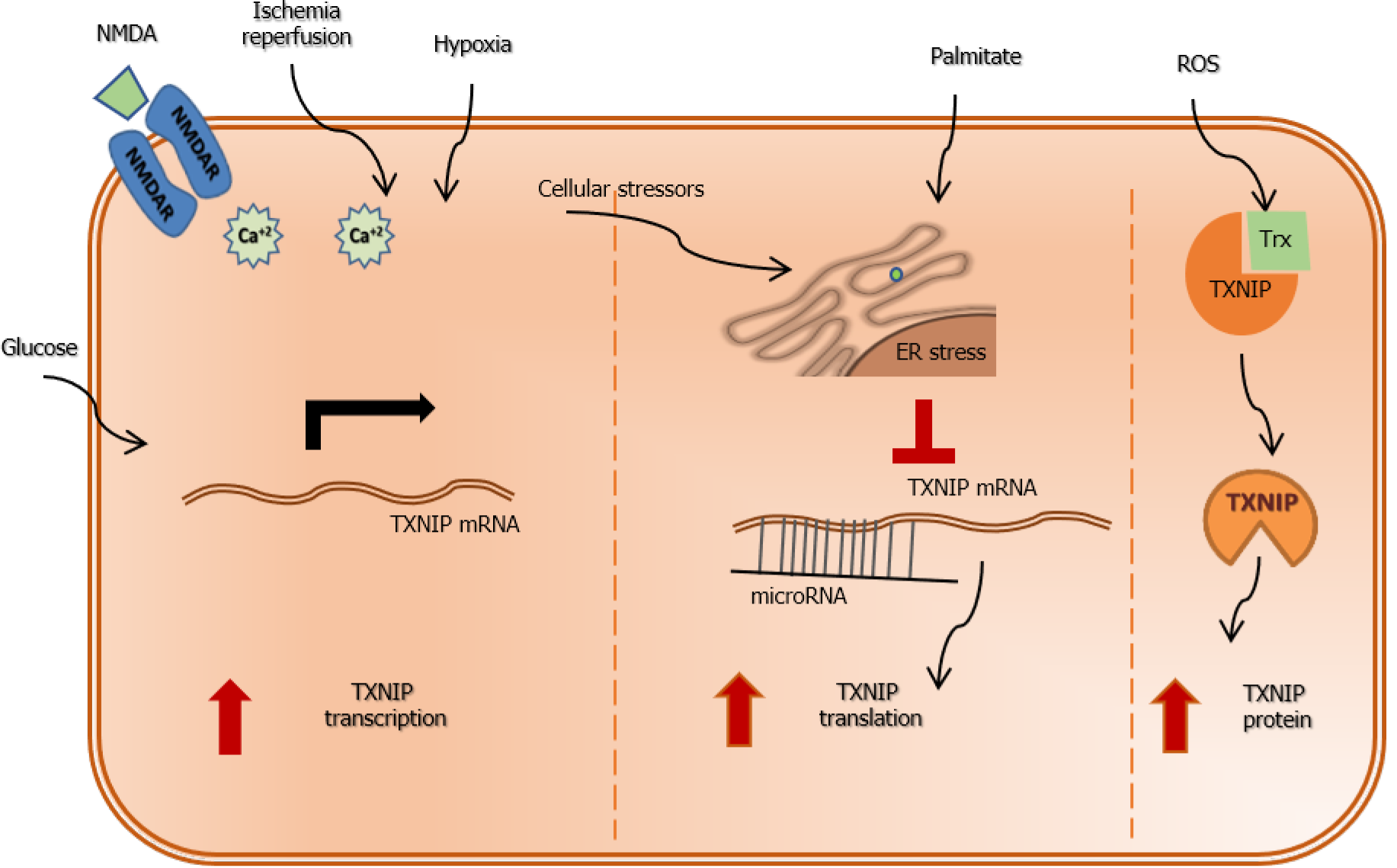Copyright
©The Author(s) 2021.
World J Diabetes. Dec 15, 2021; 12(12): 1979-1999
Published online Dec 15, 2021. doi: 10.4239/wjd.v12.i12.1979
Published online Dec 15, 2021. doi: 10.4239/wjd.v12.i12.1979
Figure 3 A diagram that depicts various ways of regulation of thioredoxin interacting protein expression.
At the transcriptional level, thioredoxin interacting protein (TXNIP) expression can be triggered by hyperglycemia as it contains carbohydrate response element. Ischemia-reperfusion injury, hypoxia and activation of the n-methyl D-aspartate receptor result in significant increase in calcium influx that trigger TXNIP expression via activation of the Ca-response element. Further, TXNIP can be post-transcriptionally regulated by endoplasmic reticulum (ER) stress and microRNA (miRNA) that traditionally bind to the 3 UTR region of TXNIP mRNA and repress its translation. Under conditions of cellular stressors, saturated fatty acids such as palmitate result in increases in ER stress and degradation of miRNA resulting in increases in TXNIP expression. Finally, oxidative stress and formation of reactive oxygen species dissociates TXNIP from thioredoxin and increase its level that facilitate activation of NLRP3-inflammsome and release of inflammatory mediators. TXNIP: Thioredoxin interacting protein; NMDA: N-methyl D-aspartate; ER: Endoplasmic reticulum; ROS: Reactive oxygen species.
- Citation: Mohamed IN, Li L, Ismael S, Ishrat T, El-Remessy AB. Thioredoxin interacting protein, a key molecular switch between oxidative stress and sterile inflammation in cellular response. World J Diabetes 2021; 12(12): 1979-1999
- URL: https://www.wjgnet.com/1948-9358/full/v12/i12/1979.htm
- DOI: https://dx.doi.org/10.4239/wjd.v12.i12.1979









